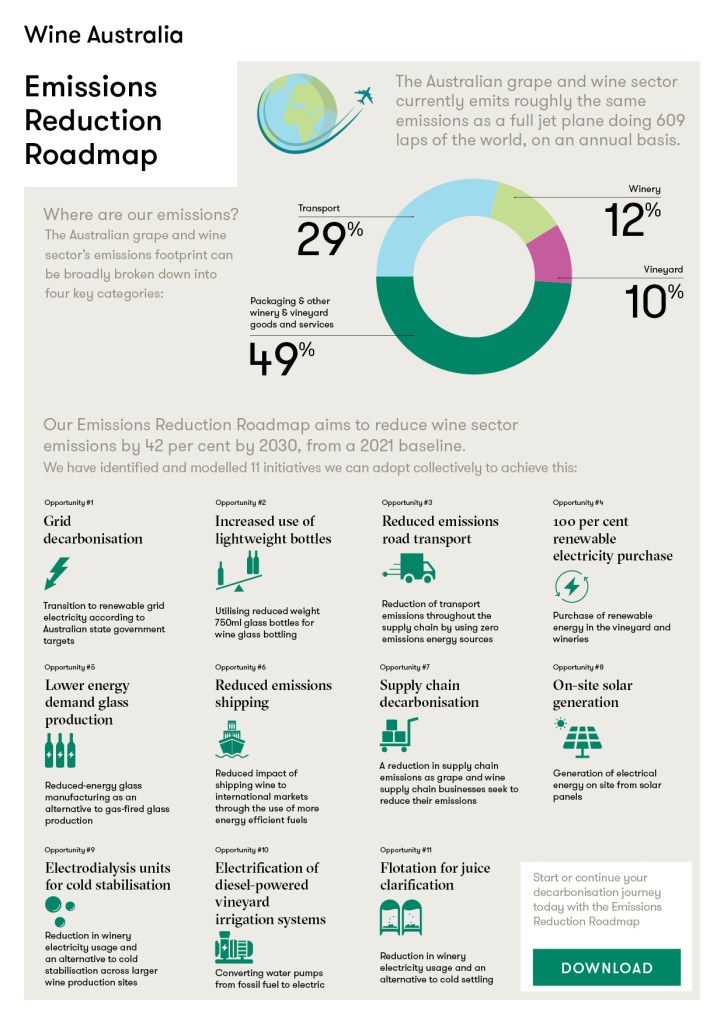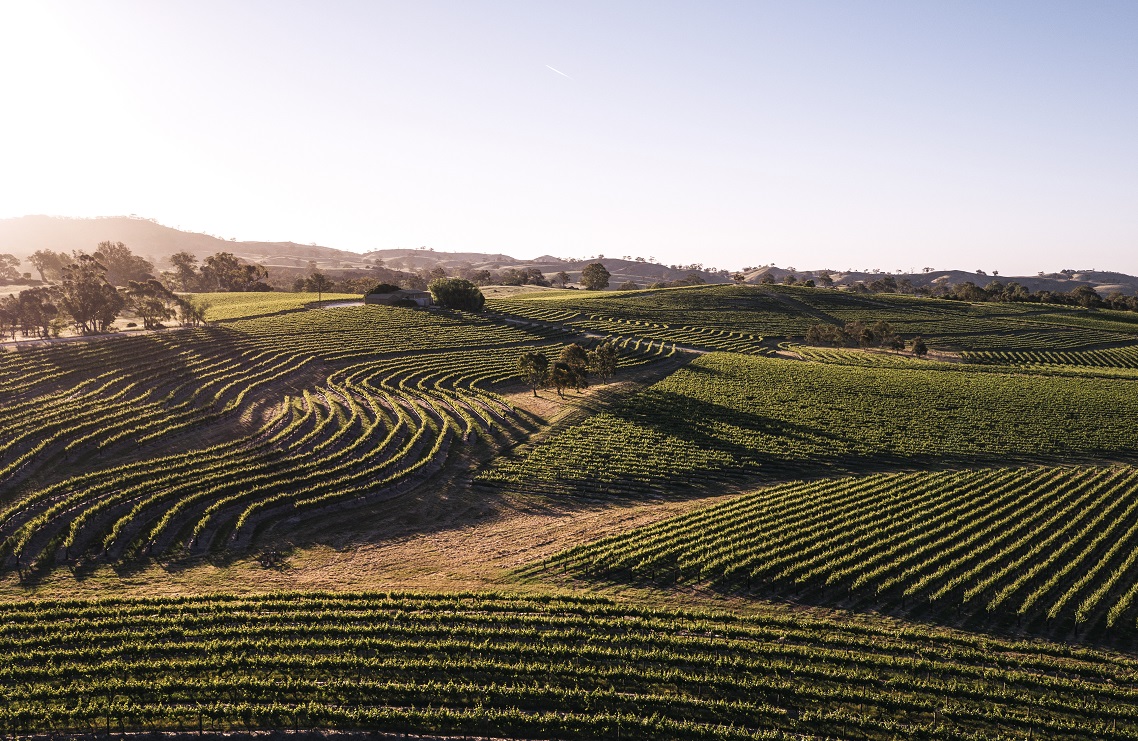Wine Australia has revealed a new pathway to reduce carbon emissions across the Australian grape and wine sector by more than 40 per cent by 2030. The Emissions Reduction Roadmap, which is supported by peak industry body Australian Grape & Wine, outlines effective and practical steps to reduce the sector’s carbon emissions.
Forming part of Wine Australia’s Environment, Social and Governance Investment Plan, the roadmap identifies areas within the sector that require future-proofing to meet customer needs and business demands.
Developed in consultation with global sustainability advisory Edge Impact and more than 200 members of the grape and wine community, the roadmap lays out a clear pathway for the sector through 11 initiatives that contribute to the reduction of emissions and result in cost savings.
Wine Australia Senior Research and Innovation Program Manager Dr Sharon Harvey explained how the Emissions Reduction Roadmap provides an opportunity for Australia’s grape and wine businesses to decarbonise, reflecting the association’s commitment to improving and safeguarding the future of Australian wine.
“Wine regions around the world are facing production challenges as a result of climate change, and global action towards a lower carbon future is accelerating. We all need to consider the emissions cost of our products to reduce our impact on the climate and to ensure access to key markets in the future.
“Backed by science, our roadmap identifies the current footprint of the Australian grape and wine sector, the key areas where emissions reduction can be achieved, and it provides practical steps for growers, winemakers, and other members of the value chain to start or further reduce emissions from today.
“With the initiatives modelled in the Roadmap, we can have confidence that there is a 42 per cent reduction opportunity that can be achieved by 2030. However, we will also review the roadmap at intervals leading up to 2030, and beyond, to see how we are tracking and to ensure that we take advantage of new innovations to support the sector’s goal of net zero emissions.”
In order to achieve the full potential of the reduction opportunity laid out in the roadmap, the sector will use data to inform business decisions. The 11 initiatives within the roadmap aim to reduce, and eventually eliminate, the use of fossil fuel vehicles, operate efficient production sites powered by renewable energy, optimise low emissions transport and distribution networks, and collaborate with the wine supply chain to reduce emissions from high emitting materials and services.
Lachie Thomas, Environment and Vineyard Research Analyst at Tahbilk Winery, a Victorian winery which has invested in emissions reduction activities for more than 20 years, spoke about the pathway.
“With the sector rapidly embracing change towards a low emissions future, resources such as the roadmap provide important information to wine businesses that supports them to adapt and embrace this future.
“There is keen interest from across the sector into how businesses can be involved in emissions reduction projects. This roadmap helps provide clear guidance and direction to companies so that they can understand the opportunities they can implement to meet the strong emissions reduction targets of 2030.
“Decarbonising the Australian grape and wine sector provides an opportunity to unite the industry. The emissions reduction activities outlined in the roadmap aim to strengthen businesses while enabling the sector to become a global leader in sustainable production.
“This is a position that will support the entire sector to thrive with greater market access, resilience to adverse challenges, and positive outcomes for our people and planet.”
Accompanying the roadmap is the Emissions Reduction Guide, a reference manual advising grape growers and winemakers how to take action in their own businesses.


